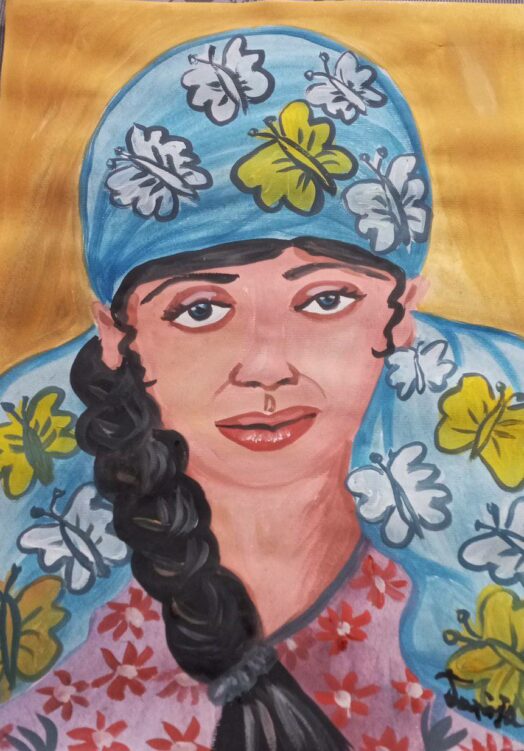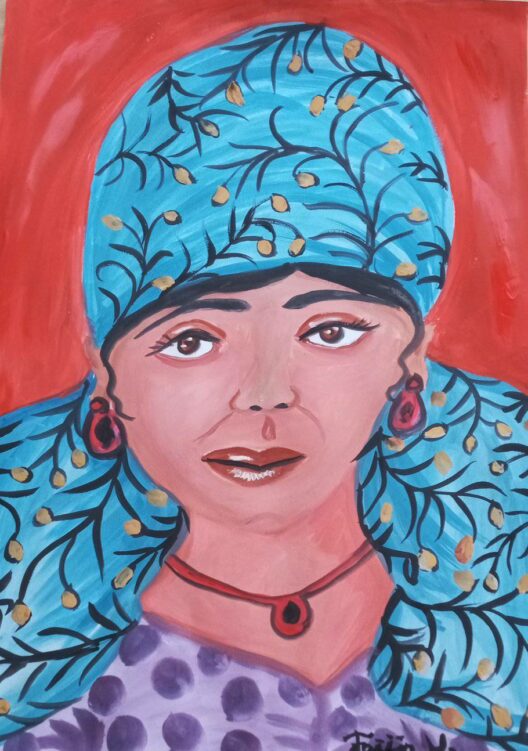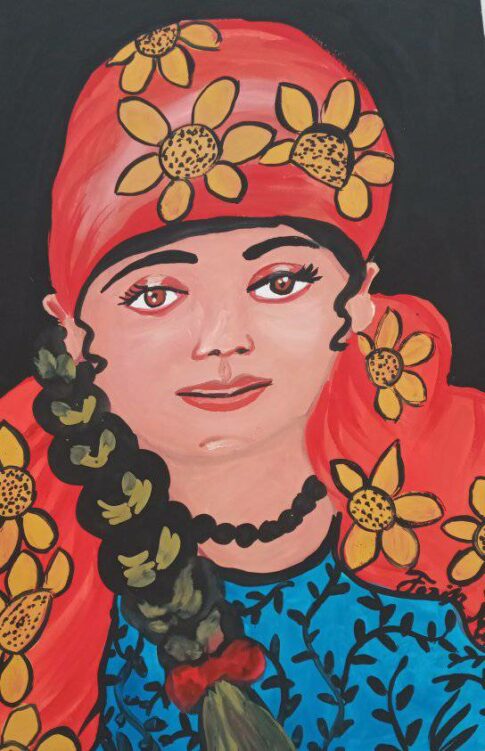March 28, 2025 | Friday
Painting the Roma Womanhood
Farija Mehmeti is a self-taught artist. She was born and raised in Kosovo and began her artistic journey in childhood, when she experimented with her talent and passion for painting. Her works that are emotionally charged portraits, mainly of Roma women, portray identity and resilience. She began painting Roma women in 2000, which is when her artistic practice took a more structured path.

She describes her art as a form of naive, free art. Mehmeti draws inspiration from the community she belongs to – Roma women – and in her art she portrays colorful costumes and patterned scarves of the women she is surrounded with, in a way, even though her subjects are often imagined, with faces and positions coming from her memory, feeling, and vision. From early marriage to gender based violence to maternal strength and social exclusion, her paintings encapsulate the life of the Roma community in a layered and emotionally aware manner. “That’s my approach,” Mehmeti says about her work, “to present my Roma women, costume, culture and my emotions and theirs. And their sad faces, where I try to show early marriage, violence, social and maternal emotions, both mine and the women of my people.”

“That’s when people saw my work for the first time. It was very special,” Farija says about her first major exhibition which took place at Kosovo’s National Gallery in 2011, curated by Erzen Shkololli. This exhibition also marked her formal entrance into the Kosovar art scene. The exhibition was particularly important for Mehmeti, because it opened doors for further recognition of her work and her art. A decade later, in 2022, her work returned to public view at the National Library of Kosovo, reaffirming her unique voice within the cultural landscape.

This work was commissioned by Manifesta – also known as the European Nomadic Biennial, which in 2022 took place in Prishtina under the title it matters what worlds world worlds: how to tell stories otherwise, curated by Catherine Nichols Her participation at this prestigious exhibition was a great momentum for her career but also gave her the opportunity to have a solo exhibition dedicated entirely to portraits of Roma women, not only showcasing the visual story telling but also as an act of cultural preservation.

Farija experiments with small-format works on paper, silk painting, textile art, and handmade accessories like dresses, hair ties, and purses. Her designs merge tradition with contemporary expression. Despite the challenges of limited resources, Farija keeps practicing her passion. Her works are self-funded and self-initiated.
Through her art, Farija Mehmeti doesn’t simply paint women—she paints memory, struggle, and hope. Her work is a testimony to what it means to be a Roma woman, an artist, and a storyteller in a world that too often refuses to see either.